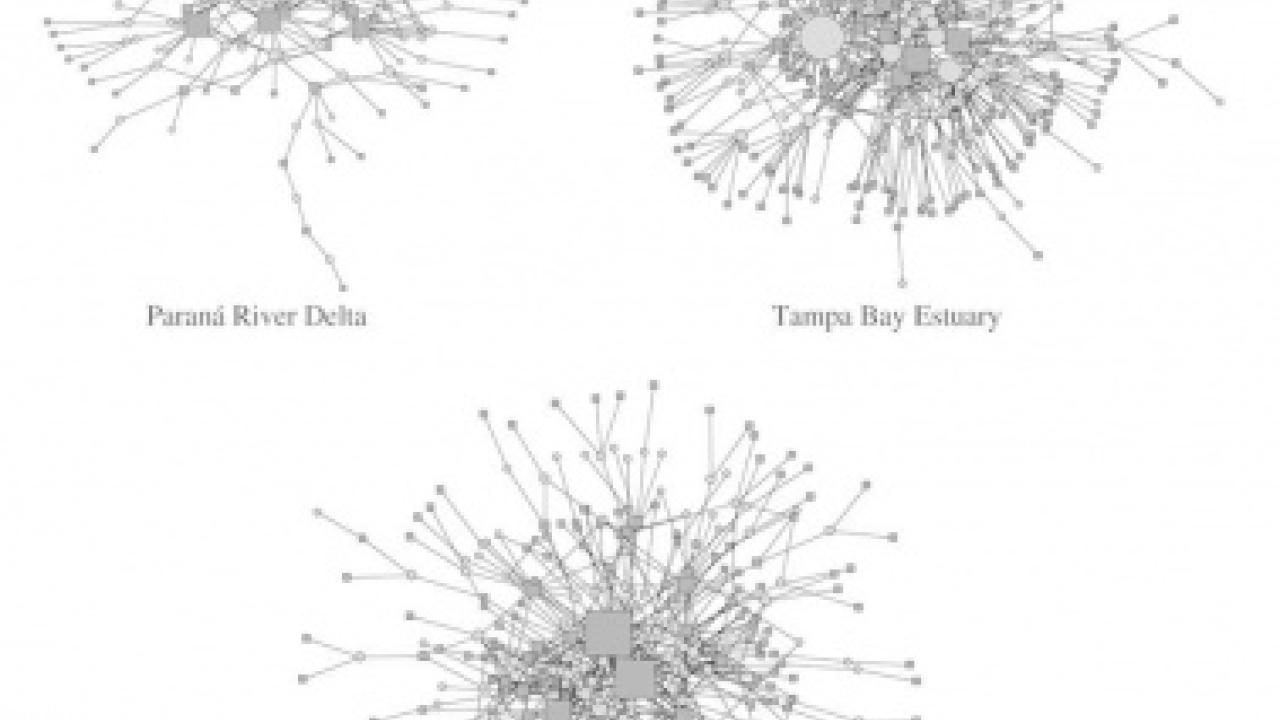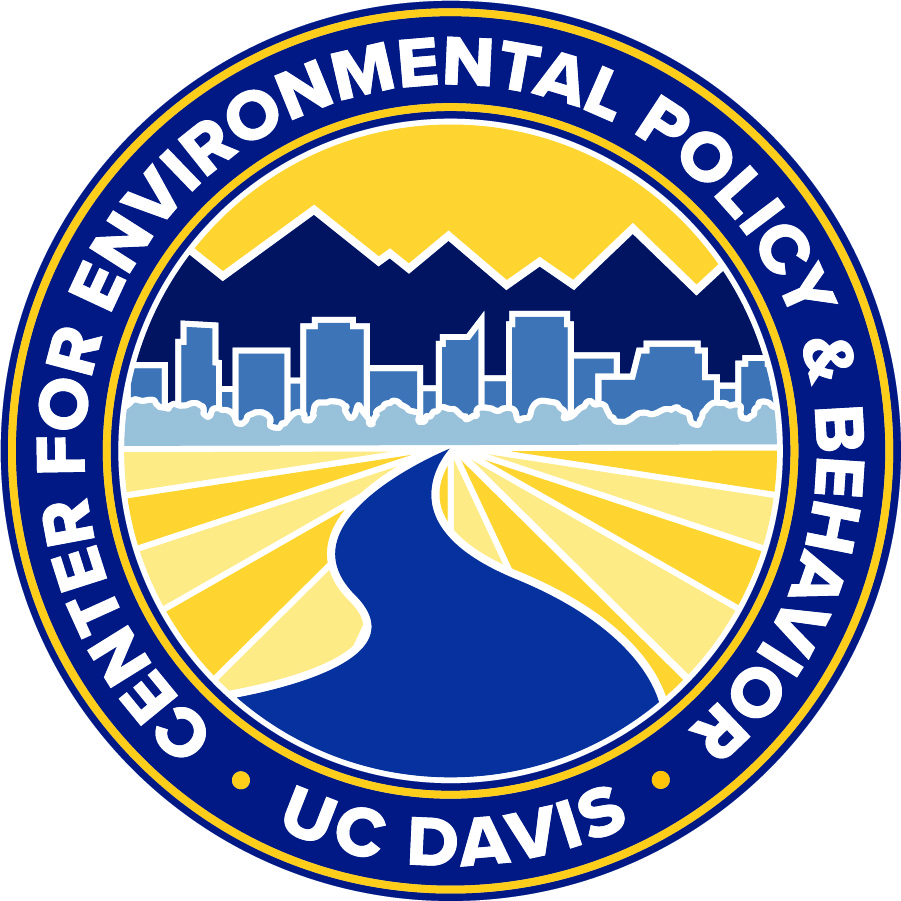
An Ode to the Benefits of Messy Environmental Policy
Ramiro Berardo and I recently published a new article on the structure of polycentric and complex governance systems for water management (sorry for the gated links…but see key figure inserted in this blog, where policy actors are circles, venues squares, and links represent participation). We have been working on this project for a number of years, driven by the reality that most environmental governance arrangements involve many different actors participating in multiple policy venues, and working on interrelated problems. Fortunately, veteran California environmental policy-maker Phil Isenberg was kind enough to provide a commentary on the article. Among Phil’s comments are, “For those of us with some responsibility for making decisions on water and the environment and hoping to 'do good', or at least muddle through as best we can, this article clearly and embarrassingly shows how we fail. Any rational person looking at figure 3 in their article is bound to observe that our water/environmental policy-making structure is a confusing mess,” and “Public policy is almost always a mess. Let's acknowledge the inevitable and figure out how to manage a messy situation. Trying to define a policy 'problem' is hard enough. Trying to find a solution is even harder. Trying to do either in a policy-making structure in which everyone is involved, but nobody is in charge, is nearly impossible.” These comments were especially inspired by the network depictions of the policy system, as reproduced in this blog and with similar versions to be found in another report on the messy policy situation in the California Delta.
Isenberg’s comments about the details of our research (especially the part about how we "bravely parachute into the middle of classic water/environmental disputes") and the overall situation are definitely on the mark. Most policy-makers would definitely assume these complex governance arrangements are a mess, and figuring out how to manage the mess is obviously one of the key challenges. However, it is important to recognize that messy environmental policy may also provide important benefits. From a normative standpoint, messy policy is an inherent result of democracy. Democratic political systems provide many opportunities for actors to participate, and also create new policy venues. Multiple policy venues provide opportunities for learning and experimentation. When new collective problems (e.g.; sea-level rise in the coastal regions) arise or actors become dissatisfied with existing institutions, democratic systems are creative insofar as new policy venues can be constructed to address that problem. If one particular policy venue fails due to budgetary or other political reasons, messy systems have built in redundancies that may be capable of filling the gap. Environmental policy problems like climate change and water management also occur at multiple geographic levels—local, regional, state, national, global—and messy environmental policy systems have a capacity to create institutions at each of those levels including cross-level linkages (the principle of subsidiarity is relevant here).
From the perspective of individual actors, systems with multiple policy venues provide diverse opportunities to pursue their policy goals and acquire resources, as well as repeated interactions with other actors to help learn policy preferences and develop trust. In other words, messy policy systems have capacities to learn and self-organize—these are critical properties for the resilience of any complex adaptive system that must survive in the face of uncertain changes.
Of course these benefits do not come without costs—fragmentation, incrementalism, political power struggles, uncertainties, delays, et cetera. As Isenberg correctly notes, the million dollar question is how to manage messy policy systems to produce the most effective policy outcomes. One common response, from both policymakers and academics, is to reduce the amount of mess and centralize the systems around a small set of authoritative actors and venues. Get rid of many of the actors and venues, and limit participation to a smaller number of decisions. Reduce the level of involvement, put someone in charge. Taken to the extreme, this is how democracy begins to resemble a dictatorship or oligarchy—a very small number of actors making decisions for every problem.
Beyond the obvious normative objections to extreme centralization, there are serious problems for effectiveness (some of which I’ve written about before). What if the central actors make a mistake perhaps because they do not have a good understanding of local problems or they have a low level of decision-making capacity? What if the central actors decide to use their political authority to benefit themselves and some small group of allies at the expense of providing broad benefits to the public? What if the central actors are eliminated due to budget or political reasons, or simply die? These are all reasons to question a knee-jerk reaction of centralization, and to recognize that the right answer lies somewhere in between a completely uncoordinated and decentralized mess (for example, venues and participation being randomly created…hint…hint to network people…random graph models….) versus a completely centralized system.
Another complication is that exactly what type of mess is most effective depends on contextual variables. Every watershed is a different social-ecological system, nested within different macro-political structures at the state (or equivalent) or country level. Thus the right mix of actors and venues, centralization versus decentralization, will not be the same in all cases—as Nobel Prize Winner Elinor Ostrom emphasized, there is no panacea, and we can expect institutional diversity. The overall institutional arrangements are probably subject to some type of evolutionary dynamics, most likely driven by political actors advancing or withdrawing political support for existing or new venues. If enough political actors dislike a policy venue, it is likely to disappear, or conversely a supportive coalition may create a new venue. From the perspective of actors who want to “do good”, we hope that democratic systems unleash the forces of political evolution in a way that solves collective environmental and other policy problems(in my opinion, this issue is at the heart of Madison’s Federalist 10).
The recognition that messy policy systems are governed by evolutionary dynamics is dissatisfying from a policy analysis perspective. Policy analysts want to guide, steer, and manage the evolution of these systems in order to produce the best outcomes. What venues, with what structures, and who should participate? Policy actors want to achieve their goals—how do they choose which and how many venues for participation, and what strategies should they use to interact? When policy-makers ask questions about governance, this is what they want to know.
I would argue that the policy sciences community doesn’t really have good answers to these questions right now, primarily because we have not been studying messy policy systems as a whole. That is why the research enterprise that Ramiro and I (along with many others) have been working on is so important. We need to understand the structure, function, and dynamics of messy policy systems. A complete understanding of the principles guiding their evolution will only come from studying many systems over fairly long periods of time. Once we understand these principles, we can begin to harness them into solid policy recommendations. Right now, many policy-makers like Phil Isenberg have been extremely successful at experimenting and learning-by-doing to make effective policy. The contribution of policy science would be to accelerate this learning process—I think our research is a start but needs to overcome plenty of problems so I invite all other policy scientists and practitioners to join us in this endeavor.

Disqus Comments